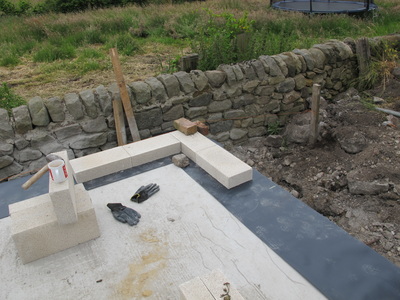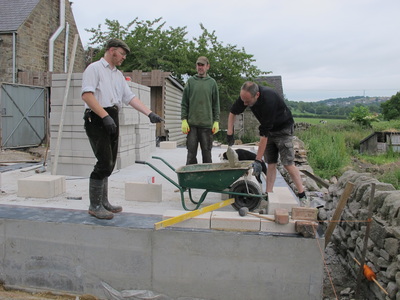|
After striking the formwork and returning it to the hirer we got the lovely Tony in to give us a days training in laying blockwork. A 450mm wide d.p.c. is laid around the edge of the raft, the blocks are laid 100mm in from the outside edge - this will allow for 100mm of rigid insulation to be installed, wrapping the masonry like a tea cosy to make the most of the thermal mass. We laid a course of 100mm blocks on their sides first - as the blockwork will be exposed on the inside it is important (to me!) to co-ordinate the blocks to minimise cutting around windows etc. Tony helped us set out our string lines (marking the alignment of each course) and build up the corners & away we went.
We used a mix of 1:1:6 cement: hydrated lime: building sand. The lime (although not as environmentally friendly as hydraulic lime reduces the amount of cement required and increases plasticity). As the wall will be clad on the outside a strong mix to resist weathering isn't required. According to the Inventory of Carbon and Energy (ICE) carried out by the University of Bath a 1:1:6 mix is responsible for 0.163KgC02/Kg whereas 1:4 cement:sand would produce 0.177KgC02/Kg - a small saving.
0 Comments
Leave a Reply. |
AuthorMike Hawkins is a co-op member and is responsible for the design and management of the build. He'll also live in it when its finished - hooray! He teaches future architects at Leicester DeMontfort and Birmingham City universities. Archives
November 2017
Categories |
This site is under construction






 RSS Feed
RSS Feed
